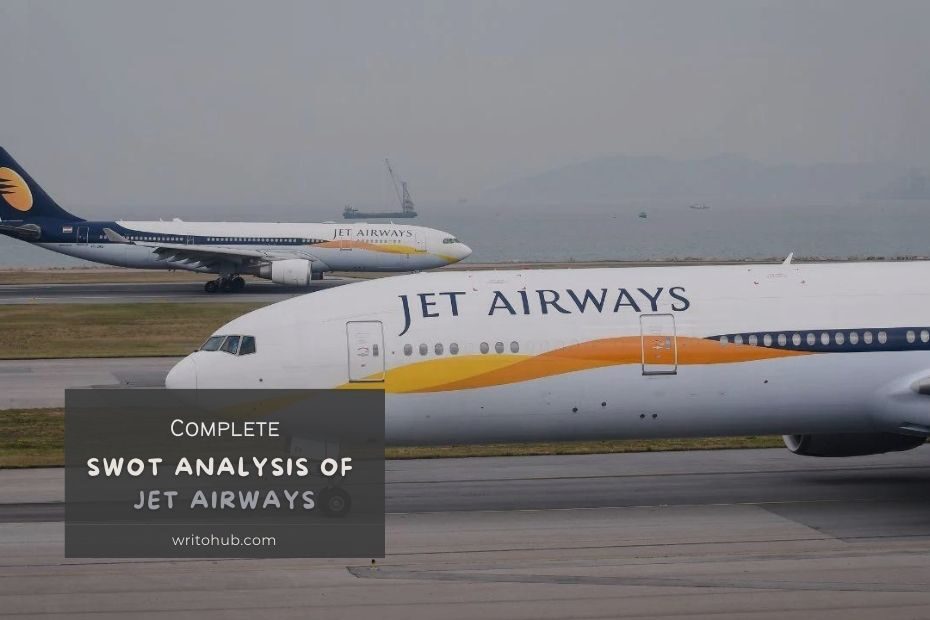The SWOT Analysis of Jet Airways tells the SWOT (Strengths, Weaknesses, Opportunities, and Threats) of the Indian aviation company – Jet Airways!
Jet Airways, a prominent Indian airline, operates in the highly competitive aviation industry.
A SWOT analysis of Jet Airways reveals its strengths, weaknesses, opportunities, and threats, providing insights into its strategic position in the dynamic market.
Strengths in the SWOT Analysis of Jet Airways
- Established Brand: Jet Airways has an established brand reputation and recognition, particularly among Indian travelers.
- Wide Domestic and International Network: The airline has a comprehensive route network, connecting major domestic and international destinations, enhancing its reach.
- Loyalty Programs: JetPrivilege, the airline’s loyalty program, attracts and retains frequent flyers, fostering customer loyalty.
- Experienced Workforce: Jet Airways has a skilled and experienced workforce, including pilots, cabin crew, and ground staff.
- Code-Share Agreements: The airline has code-share agreements with multiple international carriers, expanding its global connectivity.
Weaknesses in the SWOT Analysis of Jet Airways
- Financial Challenges: Jet Airways has faced significant financial challenges, including debt and operational losses, impacting its ability to invest in modernization and expansion.
- Operational Delays: The airline has struggled with operational delays, including flight cancellations and service disruptions, affecting its reputation and passenger experience.
- Aging Fleet: A substantial portion of the airline’s fleet consists of older aircraft, resulting in higher maintenance costs and fuel inefficiency.
- Intense Competition: The Indian aviation market is highly competitive, with both domestic and international carriers vying for market share.
- Labor Disputes: Jet Airways has faced labor disputes and workforce-related issues, leading to disruptions and increased costs.
Opportunities in the SWOT Analysis of Jet Airways
- Cost Optimization: Implementing cost-cutting measures and operational efficiencies can improve profitability.
- International Growth: Expanding and optimizing international routes can tap into the growing demand for global travel.
- Fleet Modernization: Investing in fuel-efficient and modern aircraft can enhance operational efficiency and reduce maintenance costs.
- Digital Transformation: Leveraging digital technologies for ticketing, passenger services, and operations can enhance efficiency and customer experience.
- Partnerships and Alliances: Strengthening partnerships and alliances with global carriers can enhance the airline’s connectivity and service offerings.
Threats in the SWOT Analysis of Jet Airways
- Economic Downturns: Economic recessions or downturns can lead to reduced passenger demand and revenue.
- Competition: Jet Airways faces intense competition from both domestic and international airlines, impacting pricing and market share.
- Fuel Price Volatility: Fluctuations in fuel prices can significantly impact operational costs.
- Regulatory Changes: Evolving regulations, including safety and security requirements, can impact operational processes and costs.
- Geopolitical Factors: Political instability, terrorism, and geopolitical tensions can affect international travel and airline operations.
Conclusion
Jet Airways’ SWOT analysis highlights its position as a prominent player in the Indian aviation industry.
To maintain and enhance its market presence, Jet Airways must address weaknesses, seize opportunities, and mitigate threats while adapting to changing market dynamics and customer expectations.
